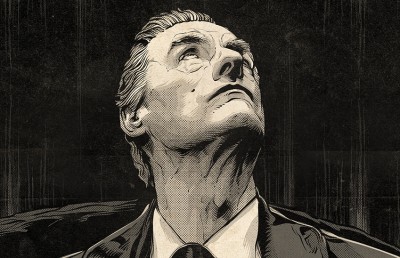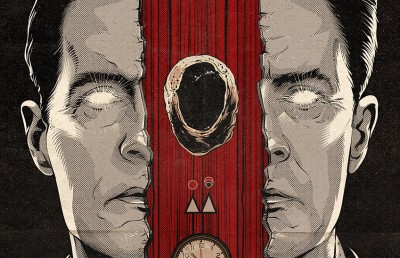Ghosting the Machine
Time / Telephones / Trauma
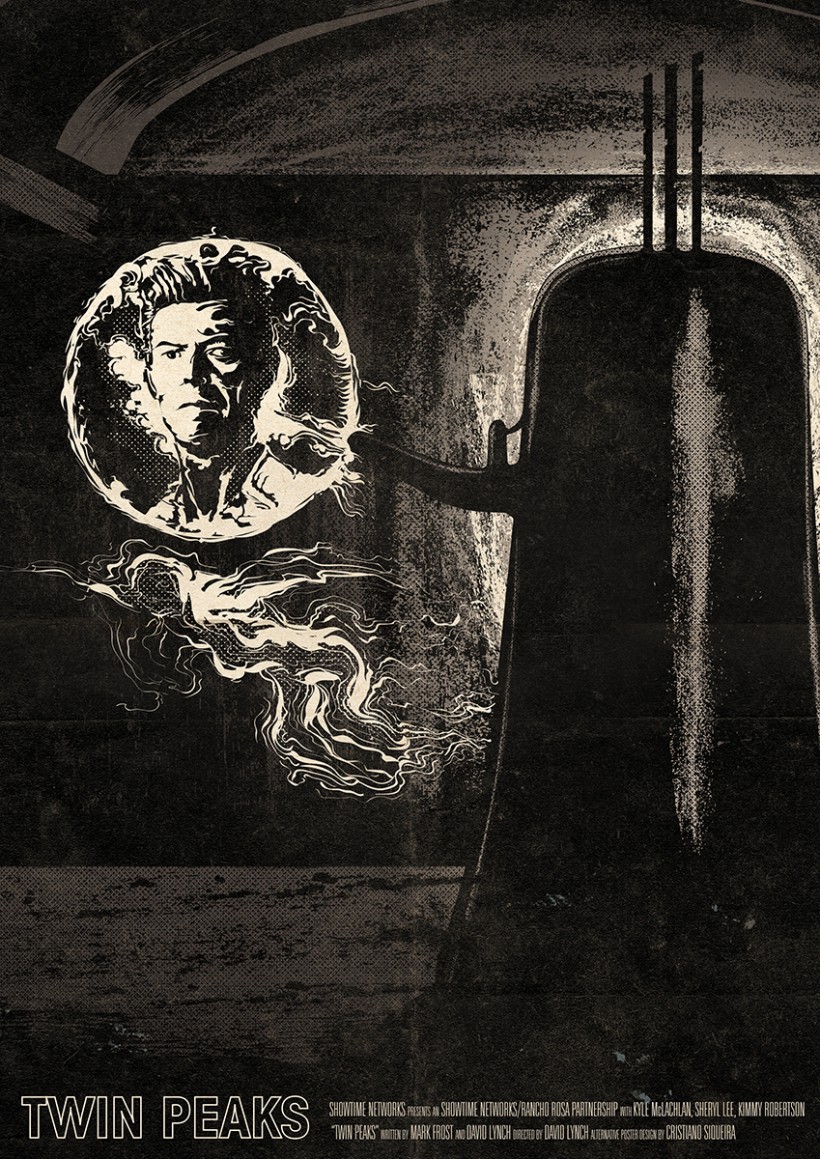
Image courtesy of Cristiano Siqueira
Where does the time go?
R. was the object of my first serious, unsettling crush. We were in the same class from grades 4-6, and for three years I could hardly breathe. We went on a field trip in the final term of grade 6, the spring of 1990. I brought an automatic camera along. Her birthday fell during the trip. Someone had sent a cake and, secretively, I took a picture of her blowing out the candles. Another boy caught me and teased me. I felt guilty (or was it ashamed?) for trying to capture something of her that would be mine and mine alone.
I can see now how these projections only enshrouded R., turning her into little more than a screen for my projections of confused, desperate, pubescent desire. I might have made her my Beatrice, an abstraction, a vessel for the bilge of masculine gazes and an impossibilized, modern courtly love. But somehow I got her phone number and tried to make her real. I called her every evening after dinner, but she didn’t have call waiting and the line was always busy. I managed to get through one night and immediately panicked when she actually picked up. At first all I could talk about was how surprised I was to be talking to her. She told me about how much time she spent on the phone and that her friends regularly used the emergency breakthrough service to get through. She complained that her mom would get mad when they did, but I silently wondered whether one’s social life might ever really constitute a state of crisis.
Eventually the conversation turned to TV. She told me about this mystery show she was watching, one that only the girls at my school, it seemed, were talking about. It was called Twin Peaks, and it was about a girl named Laura Palmer who’s been murdered. It begins, she explained, with the discovery of a corpse, a body enshrouded in plastic, by a sad sawmill manager named Pete Martell. But what actually sets things unspooling is his phone call to Twin Peaks sheriff, Harry S. Truman. Lucy, the receptionist through whom the call is transferred, haltingly tries to explain to the sheriff which telephone he should pick up: “the phone on the table by the red chair, the red chair…against the wall…the…the…little table, with the lamp on it, the lamp that we moved from the corner…the black phone, not the brown phone.” It’s a ridiculous moment and it belies the seriousness of the call, a calculated swerve away from the possibility of a telephone failing to connect. After all, it’s human error alone that prevents the message from being transmitted, that impedes the proper channel from being identified. But network still require bodies, and it’s the call to the sheriff that establishes our relay. So when Sheriff Truman visits Leland Palmer (Laura’s father) at the Great Northern Hotel where he works, the state of crisis is already in place. Leland, who is on the phone with Sarah Palmer (Laura’s mother who, phoning around town, is distraught because she can’t get news of her daughter’s whereabouts), sees the sheriff pull up. Immediately intuiting the message that the sheriff carries, Leland folds and, at the other end of the line, so does Sarah. The shock is too intense for them to address each other; Leland drops the phone. And now Sarah’s moans and sobs stream from the receiver. Again and again, the phone will mediate grief and pain, just as it will facilitate violence. Twin Peak’s phone system is both a harbinger of pain and a network of angels that protects its users from the grief of overconnection. 1
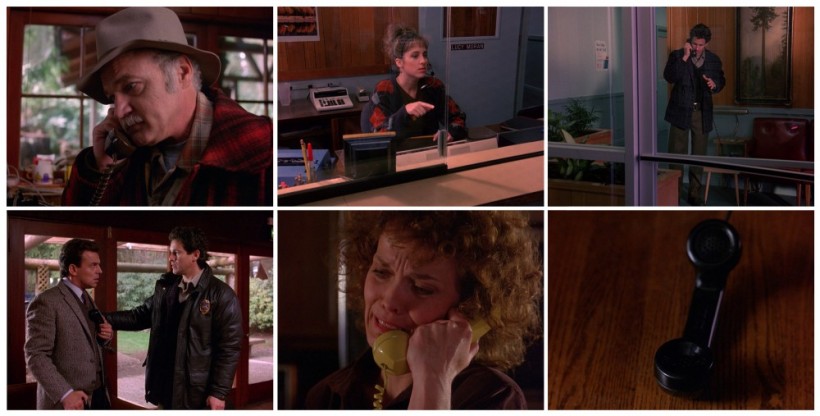
The telephone, from its beginnings, is irrevocably connected to death and the hereafter. There is a literal truth to this—Alexander Graham Bell’s early telephonic experiments employed a severed human ear to model the circuits that the inventor believed made it possible for the ear to “speak” to the brain. 2 On a more spiritual or ephemeral plain, telephones were among the new electrical technologies through which were uncoupled from bodies, spitting them out across great distances, sometimes committing them to and entombing them in storage devices in which they would outlive the flesh. 3 The thing about telephones is that they make us answerable. 4 There’s no turning off or away from the telephonic, from its having been unleashed upon the world. But in 1990, the malevolence of electricity (as is retroactively foretold in Fire Walk With Me) is at least confined to wires and circuits influenced, only minimally, by induction.

Electricity is dark, and it is also deceptive. The Twin Peaks phone system is mainly a carrier for fear and suffering, but it also abets the multiplication and confusion of bodies and stories. If the sound of a body pushed to its emotional and corporeal limit is the main telephone tone of Twin Peaks, there is a secondary tenor that is still important. It is the hushed, conspiratorial whisper of someone who is trying to hide something. That the telephone seems to separate a voice from its body, spilling it controllably elsewhere, is a fundamental feature of electrical deception. When coupled with recording—with technologies of electrical inscription 5 —the once apparent integrity of a pre-telephonic voice anchored in its pre-telephonic body is undone. Which means that Maddy Ferguson, who comes across a cassette recording made by her dead cousin Laura, can hatch a plan, along with James (Laura’s lover) and Donna (Laura’s best friend), to trick Laura’s psychiatrist, Doctor Jacoby (who seems to be in possession of another tape made on the night of Laura’s death), into leaving his office so that they might retrieve the recording. The confusion is further abetted by a video tape made by the three showing an ersatz Laura displaying the day’s paper. Recorded signals lend credibility to even a dead girl’s reappearance; recorded signals are evidence, even when they are enlisted to deceive.
In 1990, the inhabitants of Twin Peaks are connected by electrical networks, by wires that channel signals and constrain them to predictable paths. Pain and depravity are wired and analog. That in 1990 we find a hysterical Andy (the sheriff’s deputy), sobbing to Lucy, holding an early brick of a cell phone at the site of Laura’s murder is only a foreshadowing of the ways in which pain will be encoded in the future.
Where did the time go?
Twenty-five years later and most are present and accounted for, although some have settled into the wrong bodies. We haven’t picked up where we left off, of course, because time has been unspooling in our absence, and things have, of course, changed. The world is now newly unstuck and increasingly sinister. It’s less mysterious, even though it’s now much harder to know what the hell is going on. Everyone is now networked, but no one is connected. Time seems to have ceased to flow forward, as it should at least seem to flow; we’re now vaporous in networked time, with every once-linear and fleeting timeline being constantly folded into the present. 6
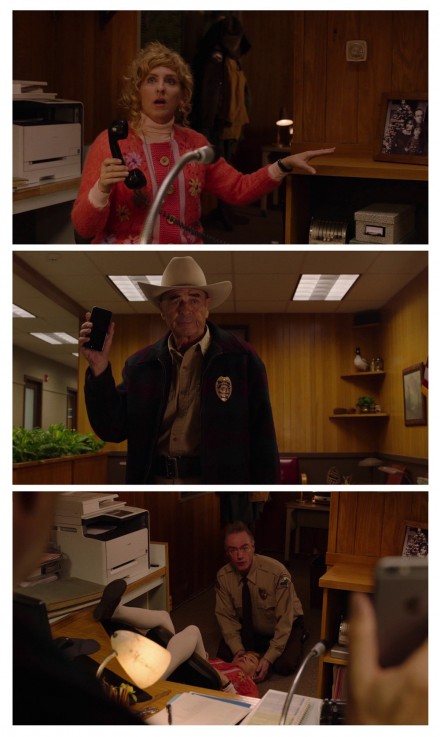
Agent Cooper, after his return to (possibly?) the right world and (maybe?) the right body, will later ask, “what year is this?” This is one of many prophecies has come to pass; it’s twenty-five years later and here we all are. (But isn’t it asinine to note that time has passed; can a prophecy really be asinine?) We don’t need to take the word of a dead girl trapped in a red room to know that now is now. The present setting is as plain as the unavoidable technologies that populate this moment; laptops capable of running convincingly contemporary fake interfaces are a solid indication of presentness. But curiously, at first, communication still seems to happen exclusively via voice and cable. That is, until we find Lucy (perhaps the most attuned media critic in Twin Peaks) on the line with Sheriff Truman. Lucy is working through some vexing questions about metaphysical realism with the sheriff, asking him about what happens with the thermostat at the police station when no one is there. With her back to the door, a noise at the entrance prompts Lucy to end the call: “I have to go, Sheriff Truman, because there are some people coming in through the front door.” The sheriff enters, but he’s not the right sheriff exactly, or the one we had hoped to reconnect with after all these years. It can’t be the sight of an imposter sheriff that causes what comes next because, albeit without us, time has never stopped unspooling in Twin Peaks (otherwise we’d have to tell Lucy that nominalism is the reigning ontology, that the police station can only materialized by the gaze of an observer, and therefore who the hell knows what happens with the thermostat when she’s not there?). No, it’s the right sheriff, for Lucy at least, but it’s what’s in his hand that causes her to scream and topple back in her chair: an iPhone.
From this moment on, phones both corded and cellular will be used to conspire and to create paradoxical connections and distances in relation to grief, but the telephonic darkness will also materialize as text and texts.
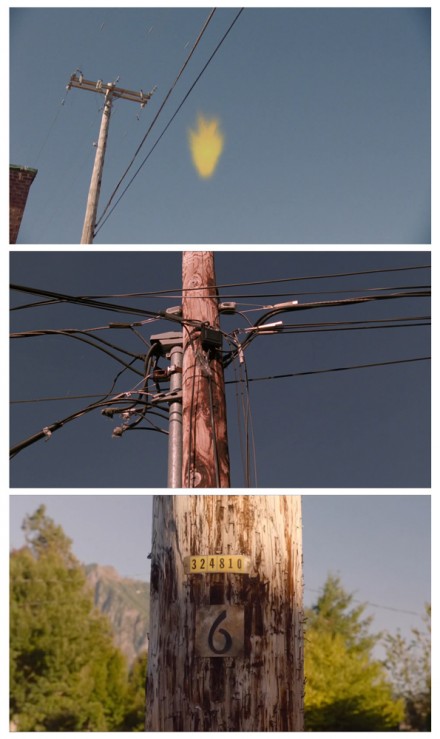
In 2017, electricity possesses a different intensity. Now that signals manifest so readily as waves, it’s as though electricity has gotten new ideas about mobility. 7 In 1990, in the lead up to Laura’s murder, electricity is gathering force, but its threat remains symbolic. Laura still walks the earth and the electrical pole outside the Fat Trout Trailer Park, the one marked 6, only hints at the imminent sparks of disarray.
The pole’s crown is knotted with wires through which conspiracies and heartbreak have passed and will continue to flow with a new intensity, but for now it’s silent, a premonition that there will one day be a charge in the air. The silent current captivates Carl Rodd, the park’s manager, but it isn’t yet ready to assert its agency.
But now, twenty-five years later, Carl Rodd once again finds himself transfixed by the charge of pole number 6. He has just witnessed the horrific death of a little boy, ploughed over by Richard Horne at the wheel of stolen car. This time, the pole sizzles menacingly; the tangle of cables now seems inadequate to contain its gathering force. And we’ve seen how electricity can and will be marshalled by dark forces, that its potentiality is already imminent to the phone system. Sitting in a police interrogation room, the shackled Dark Cooper announces in his unsettling deadpan, “Now that everyone’s here, I will make my phone call.” He raises the receiver, dials an absurdly long string of numbers, and then, suddenly, mayhem breaks loose at the station. Alarms sound, lights flash, cops panic. Dark Cooper, unsurprisingly nonplussed, intones, “The cow jumped over the moon.”
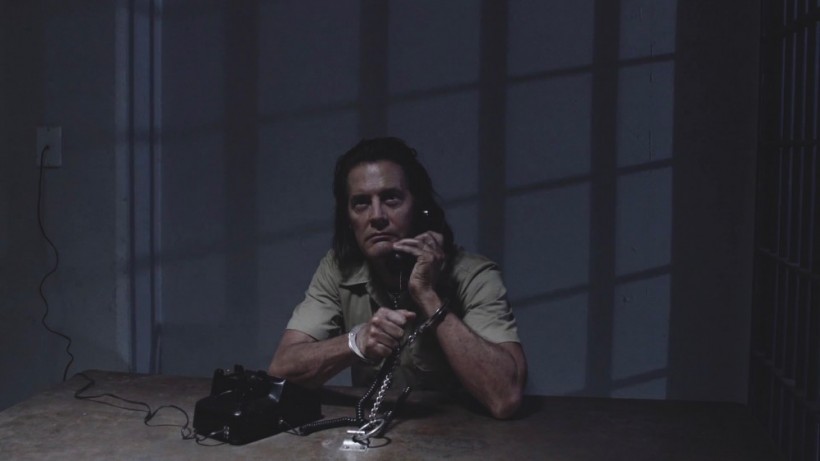
He hangs up, and order is seemingly restored. But Evil Cooper has demonstrated his power, his ability to harness dark electricity, tapping its power through the phone system. But it is clear that even Dark Cooper will never have full mastery over the elemental forces of electricity; even his marshalling of electro-telephonic power has its limits. It is the network calls Dark Cooper into the circuit—not the other way around. Or so it would seem soon after, when he encounters a spectral manifestation of the shadowy detective, Phillip Jeffries, in the room above the convenience store. Their conversation is cut short when a telephone rings. An electrical charge cuts through the room as Dark Cooper answers. He lifts the receiver and, puzzled, perturbed, he flickers and glitches, and is abruptly circuited back downstairs to the convenience store payphone. The phone is a portal, but even Dark Cooper doesn’t get to decide where it will take him.
In 1990, pain, conspiracy, and connection are hardwired. But now, in 2017, we must reckon with their dilation into a field that permeates everything, even temporality, reflecting its flux and inscrutability. Voices aren’t what they used to be. Phones no longer ask the same things of us. Now, having colonized our attention, having liberated themselves from their copper tethers, they exert their own desires. The networks that once called on us to answer, to become suitably telephonic, always delivered us back to the home, to the office, to the payphone in the convenience store. Our voices were unstuck, but our bodies were compelled to follow. Of course this isn’t the case any longer—we are called incessantly into the telephonic, into a cloud of unknowing. Phones are less and less hungry for voices; they now crave eyes and the soft touch of fingers.
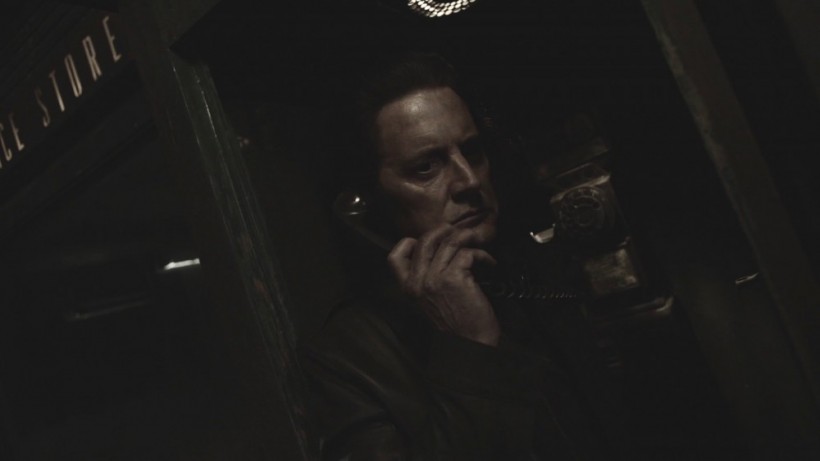
But even though electrical networks will always have their way with us, they cannot fully insulate us against the possibility of connection at a distance. We know this to be true when we listen in on the phone conversations between Margaret Lanterman (aka the Log Lady) and Deputy Hawk. Towards what will be an end, of sorts, she calls to say, “Hawk. I’m dying. You know about death, that it’s just a change, not an end.” Her awareness of her mortality is palpable. The sadness in Hawk’s face shows that the affective power of the message, even if a little degraded by distance and flattened by compression, is still affecting. But it is also limited. “Remember what I told you,” she continues. “I can’t say more over the phone…But you know what I mean…From our talks, when we were able to speak face to face.”
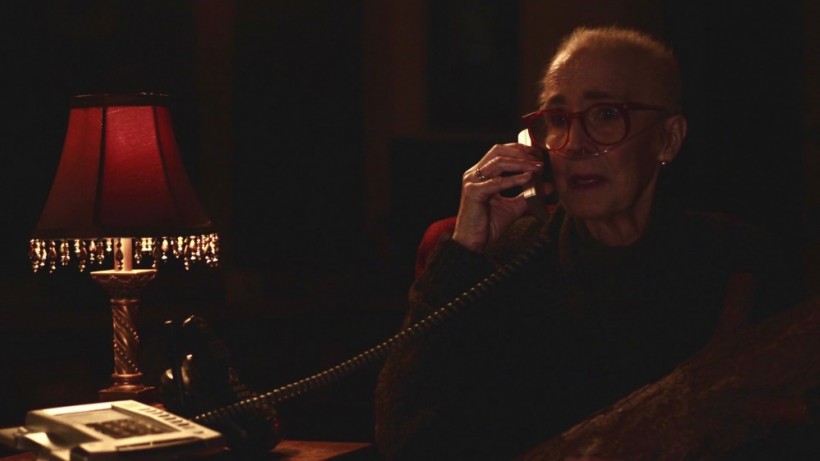
I have this dream, that it’s 2017, and I’m in sixth grade. I look across the classroom at R., the object of my first serious, unsettling crush. She’s barely acknowledged me, but I’m desperate to get her attention, to at least set my own heartbreak unspooling so as to escape this purgatory. I tell myself that I’m too shy to ask for her number, but then I remember that it’s 2017 and I don’t even know my own phone number. So I find her on Facebook. I click on the the “message” button, whose icon is a thought bubble that encircles a bolt of lightning. Electricity. I have no idea what to write. I settle on, “:-) ALL.” I don’t know what this means, but that’s what comes out. At first the message fails to send, so I try again. This time it goes through. The encircled check mark next to the message turns a solid blue, so I see that she’s received the message. And so I wait. After a few minutes those three waving dots appear, undulating, beckoning. But then the rippling stops. And no words come. And as I wake I have a heavy feeling of disappointment, of underwhelm, for how much less mundane it should feel to be ghosted.
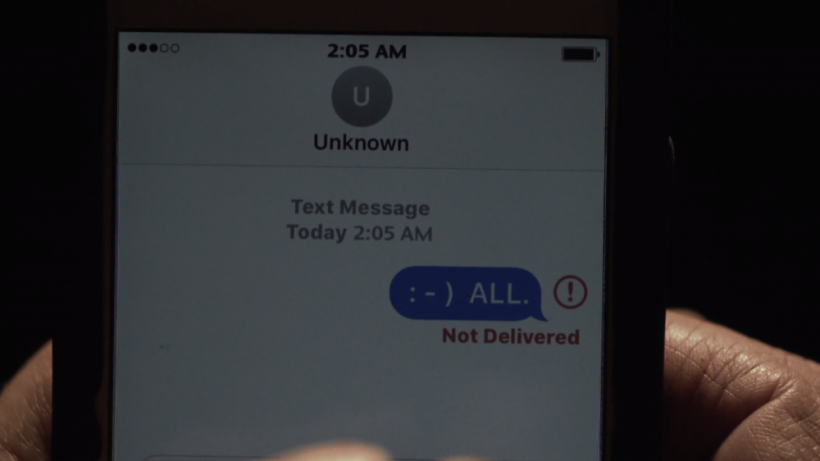
Bibliography
Bennett, Jane. Vibrant Matter: A Political Ecology of Things. Durham: Duke University Press, 2010.
Connor, Steven. Dumbstruck: A Cultural History of Ventriloquism. Oxford: Oxford University Press, 2000.
Ernst, Wolfgang. Chronopoetics: The Temporal Being and Operativity of Technological Media. Translated by Anthony Enns. London: Rowman & Littlefield, 2016.
Kittler, Friedrich. Film, Gramophone, Typewriter. Translated by Geoffrey Winthrop-Young and Michael Wutz. Stanford: Standord University Press, 1999.
Peters, John Durham. Speaking into the Air: A History of the Idea of Communication. Chicago: University of Chicago Press, 1999.
Ronell, Avital. The Telephone Book: Technology-Schizophrenia-Electric Speech. Lincoln: University of Nebraska Press, 1989.
Notes
- John Durham Peters connects the perceived promises and problems with telephonic communication, noting its indebtedness to angelology. John Durham Peters, Speaking Into the Air: A History of the Idea of Communication (Chicago: University of Chicago Press, 1999), 20-21. ↩
- Steven Connor, Dumbstruck: A Cultural History of Ventriloquism (Oxford University Press, 2000), 357. ↩
- “The shocking experience of transcending space through disembodied telecommunication led to the inverse hallucination of transcending time through communication with the dead, which was illustrated in ghost stories of telegraphy.” In Wolfgang Ernst, Chronopoetics: The Temporal Being and Operativity of Technological Media, trans. Anthony Enns (London: Rowan & Littlefield, 2016), 101. ↩
- Avital Ronell, The Telephone Book: Technology-Schizophrenia-Electric Speech (Lincoln: University of Nebraska Press, 1989), 2. ↩
- On media as systems of inscription, see Friedrich Kittler, Film, Gramphone, Typewriter, trans. Geoffrey Winthrop-Young and Michael Wutz (Stanford University Press, 1999). ↩
- Wolfgang Ernst refers to the fragmented temporal regime brought about by networked, digital media as “networked time.” Ernst, 180-182. ↩
- On the subjectivity of electricity, see Jane Bennett, Vibrant Matter: A Political Ecology of Things (Durham: Duke University Press, 2010), 20-38. ↩


